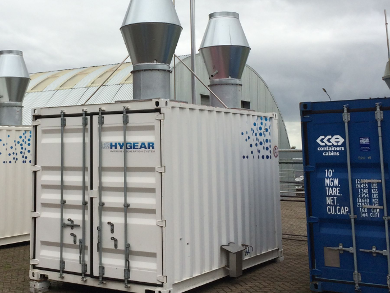On an industrial scale, hydrogen is primarily produced by natural gas steam reforming. The hydrocarbons in the gas are converted at high temperature into a hydrogen-rich mixture of gases. Hydrogen is then separated out during an additional process step. The deactivation of the employed catalysts by deposition of carbon and sulphur impurities on their surface causes a reduction in the amount of hydrogen produced.
As part of the EU NEMESIS 2+ project, researchers at the German Aerospace Center (Deutsches Zentrum für Luft- und Raumfahrt; DLR), together with partners from science and industry, have re-examined the entire process systematically, and have been able to identify the optimal operating conditions to produce high-quality hydrogen with a purity of 99.999 %, and for the first time, from diesel and biodiesel through a process that is stable over a long period. The efficiency of the process, from start to finish, amounts to approximately 70 %. A techno-economic evaluation determined maximal production costs of 5.80 EUR/kg of hydrogen.
The process uses the existing infrastructure for storing and transporting diesel and biodiesel. The only added ingredient is a compact facility for producing the hydrogen. In future, this could be used in all areas where decentralized hydrogen production is needed – for example, for filling up fuel cell vehicles, or for processes used within the glass and steel industry. A prototype the size of a shipping container was built by HyGear and successfully tested. It produces 4.4 kg of hydrogen from 20 L of biodiesel in one hour – this roughly corresponds to the fuel tank of a B-Class F-cell vehicle.
- German Aerospace Center (Deutsches Zentrum für Luft- und Raumfahrt; DLR), Stuttgart, Germany
- HyGear, Arnhem, The Netherlands
- NEMESIS 2+ project,
A collaborative project funded by the Fuel Cells and Hydrogen Joint Undertaking (FCH JU) within the Seventh Framework Programme for Research (FP7) of the European Commission (EC).
It ran until June 2015 and was coordinated by the German Aerospace Center (DLR). Project partners included two research facilities, the Centre for Research and Technology Hellas in Greece, and Instituto Superior Técnico in Portugal, and three industry partners, Johnson Matthey in the UK, Abengoa Hidrógeno and Abengoa Bioenergía San Roque in Spain, and the medium-sized company, HyGear in the Netherlands.




